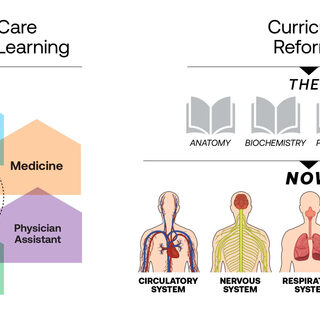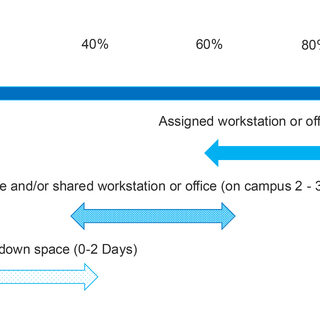Tradeline's industry reports are a must-read resource for those involved in facilities planning and management. Reports include management case studies, current and in-depth project profiles, and editorials on the latest facilities management issues.
Latest Reports
Medical and Health Education Buildings Serve as a Model for a Hybrid Future
The design and planning of medical and health sciences education facilities serve as both the precursor and the wave of the future, with facilities that are not only mixed-use, but truly hybridized and integrated. Formerly siloed programs for nursing, medical, surgical, and pharmaceutical training reap exponential benefits from shared technology, resources, and spaces that enable multiple institutions and stakeholders to offer more robust programs. The hybrid building model mirrors a coevolving approach to healthcare, where teamwork is central, and training with the latest technologies is key. By accommodating the functions of multiple disciplines, forward-thinking institutions can both leverage available space and focus on creating environments for the interpersonal collaboration that underpins the experience of 21st-century health practitioners, as well as that of their patients.
Missouri Science & Technology Unveils a Showcase for Advanced Manufacturing
Advanced manufacturing (AM) experts say companies around the country that are currently trying to build up their AM capabilities are held back by three things: experience with cutting-edge AM equipment, experts who can show how to take full advantage of such equipment’s capabilities, and highly trained workers who have the skills to operate the equipment. Administrators at the Missouri University of Science and Technology in Rolla hope to fill all three gaps with the help of a new facility they call The Missouri Protoplex.
The Key to Donor Engagement
With funding for research under pressure at the same time that colleges and universities are looking to grow their student body, institutions are relying more on philanthropy than ever before. How do you capture the “value intersection” between the donor’s story, the institution’s unique character, and the aspirations of the prospective student? In this webinar, Advent CEO John Roberson, and Grace Johnson, client engagement manager at Advent, use case studies from Belmont University, the University of Wyoming, and the University of Southern California to demonstrate how to translate those stories into a physical space that can then attract even more philanthropy.
Modern Science in Old Buildings
How did the Massachusetts Institute of Technology (MIT) convert two century-old industrial buildings -- a former Model T Ford assembly line and the manufacturing plant where the instant camera was invented for Polaroid -- into Class A research space? They accomplished it for the same cost as new construction but in less time, with a much smaller carbon footprint, and the blessing of their neighbors.
Campus Space Planning Considerations in a Flex-Work Environment
Hybrid and remote work patterns that emerged under COVID guidelines seem to be here to stay, and universities are grappling with associated space utilization impacts alongside the cost pressures exerted by necessary program growth. In response, strategic space consolidation initiatives are paving the way for a more efficient and cost-effective approach to administrative space planning. Campus Planning at Tufts University was charged with aligning space usage with the evolving needs of faculty, staff, and students, leveraging data gleaned from utilization and occupancy at all four Tufts campuses, and have implemented space consolidations across the Medford/Somerville main campus as well as the Boston Health Sciences campus. Their takeaway: Consolidating office spaces in a way that better matches usage ensures that resources are allocated where they’re most needed.





